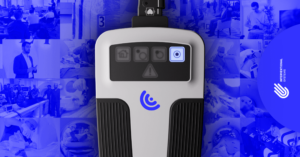Medtech Market Dynamics
The landscape of medical technology is continuously evolving, with surgical robotics standing at the forefront of this transformation. The increasing demand for safer, more precise solutions has propelled an exponential growth in the number of robotic companies appearing each year.
Despite the advancements in surgical robotics, a significant market adoption gap remains. This stems from both technical and clinical pitfalls, such as high costs, limited capabilities, complex integration processes, and a lack of service-tailored solutions.
Successfully crossing the chasm requires precise positioning to avoid the pitfalls that narrow the path to converting the majority. To address these challenges, the industry must pivot towards making surgical robotics solutions that are truly accessible, easy to use, and adaptable.
A Shift to Service-Oriented Models
To address the market demands, Surgical Robotics Companies are moving away from the traditional capital sale model towards offering comprehensive programs that provide added value and service-based solutions. ¹
The core of the new commercialization model is to sell not just a product but a holistic solution. This encompasses procedure-based payments, bundled solutions, digital services for pre and perioperative stages, and comprehensive program management.
The shift towards service-oriented business models in surgical robotics will set a new competitive standard, pushing traditional companies towards adaptation to stay relevant.
This favors major players capable of deploying comprehensive programs, potentially centralizing market control. The transition demands hefty financial and operational commitments, including the upfront costs of robotic systems.
Balancing the books between R&D and operational expenses against the financial strain of this new model poses a significant challenge for companies. To maintain an edge, ongoing investment in innovation and operations is critical, with figures reaching up to $10 million and development timelines extending to 4-5 years for a minimum viable product.
The Critical Role of Strategic Partnerships
Historically, companies interested in entering the surgical robotics market follow one of three paths:
Starting from Scratch: Building a robotic system from concept to completion offers control and independence, but it requires substantial investment in lengthy research and development, testing, and regulatory approvals.

Utilizing Established Robotic Arms: Incorporating pre-existing robotic technologies, such as those from KUKA or Stäubli, can accelerate development timeframes. However, this approach still demands significant investment and typically results in products differentiated mainly by software modifications rather than groundbreaking innovations.

Acquisition: For larger companies, acquiring an existing robotics company is a quicker path to market entry. While this approach can be effective, it is often prohibitively costly and unfeasible for most small to mid-size surgical instrument companies that need the benefits of robotics to stay competitive but lack the know-how or the resources to develop/buy a platform.

Each route presents its own set of challenges, from financial burdens to strategic decisions. The optimal path should combine the factors driving adoption by the vast majority with a Service-Oriented commercialization approach.
The pathway to success increasingly relies on partnerships between Strategics and Medical Device manufacturers. These collaborations are essential for navigating the complex landscape of technological innovation, market adoption, and regulatory compliance.
Strategics typically possess extensive market reach, well-established sales channels, and strong financial foundations. Yet, they often struggle with fast innovation cycles and the swift development pace required in robotics. On the other hand, Medical Device manufacturers have the R&D and Operational know-how to bring innovative technologies and the flexibility to adapt quickly to emerging trends.
A partnership between these entities can accelerate the development and adoption of surgical robotics by leveraging each party’s strengths. Medical Device manufacturers establish and maintain the enabling processes and operations related to a robotics program, allowing the Strategic partner to be the portal for robotics and focus on commercialization efforts.
Fostering Successful Synergies
The right time to market can make or break the success of a product release.
Partnering at the intersection of the curve where value meets risk allows both partners to share the risks and outcomes equally. Having already solved fundamental technical and clinical challenges, Interventional Systems de-risk the investment for their strategic partners, giving them the confidence to launch and expand a robotic solution.

Moreover, our partners know continuous R&D is the core of our business. We run a comprehensive Center of Excellence program with a group of luminary sites across Europe and the USA for unbiased Voice of Customer and constant exposure to the clinical experience and development of new ideas.
If you’re interested in learning more about our partnership model and technology, feel free to send us a message here.




